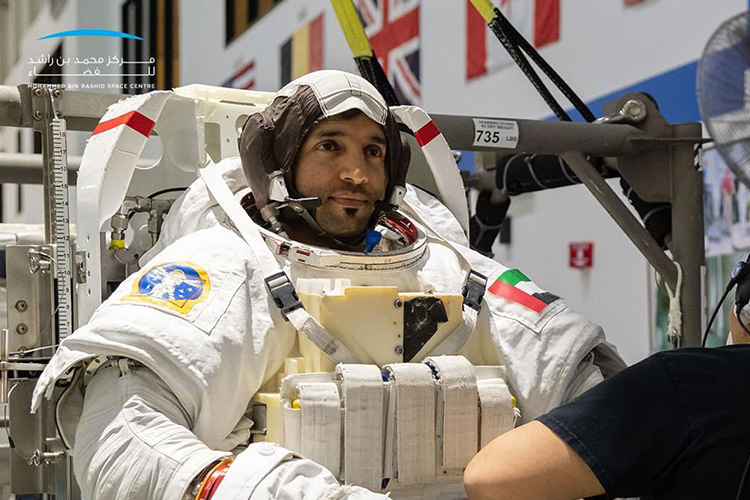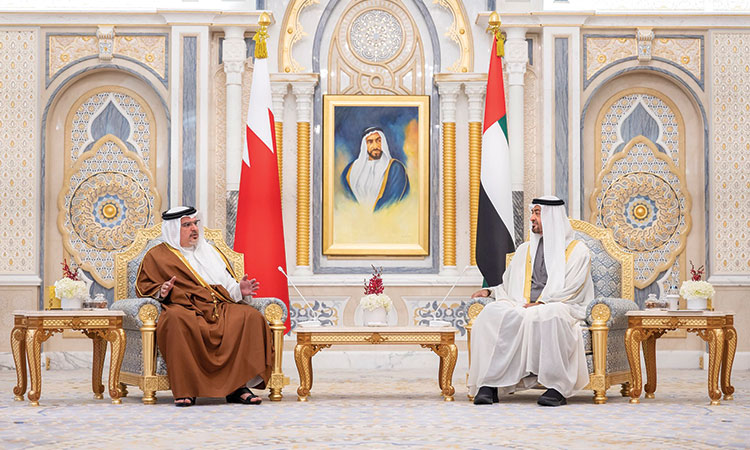UAE-Bahraini nanosatellite Light-1 launched into orbit

A view of the satellite launch.
Light-1 CubeSat is a collaboration initiative of the UAE Space Agency, Bahrain’s National Space Science Agency, Khalifa University of Science and Technology, and New York University (NYU) Abu Dhabi.
JAXA coordinated the launch from the Tsukuba Space Centre (TKSC) in Japan, and the event was broadcast live on social media channels. It was also live-streamed on Bahrain’s NSSA National TV and JAXA.
The Light-1 CubeSat represents the region’s first scientific mission to monitor and study Terrestrial Gamma-ray Flashes (TGFs) from thunderstorms and lightning.
Data gathered from the Light-1 CubeSat, which aims to leverage space science to support sustainable economic growth, will be shared globally to support scientific analysis and encourage cooperation with research centres around the world.
The team that worked on the design and development of Light-1 bus consists of 22 university students from Khalifa University including nine Bahrainis, 10 Emiratis, and three international students, advised by Dr Firas Jarrar, Manager, Yahsat Space Lab, Assistant Professor, Mechanical Engineering.
The NYU Abu Dhabi team of five Emirati students and five international students, who worked on the development of the payload called Rapid Acquisition Atmospheric Detector (RAAD - Arabic for ‘thunder’), was advised by Dr Francesco Arneodo, Programme Head of Physics, and Dr Mallory Roberts, Professor of Physics.
Dr Arif Sultan Al Hammadi, Executive Vice-President, Khalifa University, said, “The launch of Light-1 CubeSat into its orbit from the International Space Station reflects the intense collaboration engaged by all stakeholders involved, as well as the extent of technical brilliance displayed by students in the UAE with suitable guidance from experts.
“As this UAE-Bahraini nanosatellite reached its orbital position, we believe this collaboration initiative will stand out as the best example of what can be achieved by the scientists in the Arab world. We are happy to work with our brothers in Bahrain in scientific development that will not only benefit our countries but also the whole world and humanity.
“Also this is a great effort between local universities in the UAE. We believe Light-1 will carry out its mission towards studying Terrestrial Gamma-ray Flashes and their impact on aircraft and other flying devices, while supporting scientific analysis in space.”
Vice Chancellor of NYU Abu Dhabi Mariët Westermann commented, “I would like to congratulate our incredible team of students and faculty at NYU Abu Dhabi on their contributions to this historic mission, particularly their work pertaining to the scientific payload. NYU Abu Dhabi takes pride in its diversity and academic excellence, and today’s launch of the Light-1 CubeSat into its orbit from the International Space Station is the perfect manifestation of these values: key entities and experts in the field have come together from different countries and backgrounds to achieve one common, inspiring goal. We hope that the satellite will provide new data on terrestrial gamma-ray flashes, and that scientists and people around the world will benefit from them.”
Salem Butti Al Qubaisi, Director-General of UAE Space Agency, said, “The UAE has made massive strides in its space journey over the past few years, and the successful deployment of our Light-1 nanosatellite into orbit is a major milestone. Coming close on our recent success with the Emirates Mars Mission, and our first space astronaut Hazza AlMansouri’s journey to the International Space Station, this is an endorsement of our achievements in the cosmos.
“At the UAE Space Agency, we are committed to exchange knowledge and expertise with the international community to stimulate cutting-edge research, scientific discoveries and human progress. We thank all our partners across the UAE, Bahrain, US and Japan for their support in making this mission possible.”
Meanwhile, Dr Mohamed Ebrahim Al-Aseeri, Chief Executive Officer of the Bahrain’s National Space Science Agency (NSSA), said, “At the beginning, I am pleased to raise the highest congratulations and sincere blessings to King Hamad Bin Isa Al Khalifa, The King of Bahrain, and to Prince Salman Bin Hamad Al Khalifa, the Crown Prince and Prime Minister, and to the leadership of the United Arab Emirates, on the occasion of the successful launch of the Bahrain-UAE Joint Satellite (Light 1) to its space orbit.”
Light-1’s gamma-ray detection system RAAD, designed and assembled with a unique layout, and making use of state-of-the-art detection devices, is competitive with bigger satellites and can make an impactful contribution to the comprehension of TGFs. Thanks to its innovative technology, the Light-1 nanosatellite might become a pathfinder of future and larger missions targeting gamma rays.
WAM







